Costa Rica is one of the hottest vacation and adventure travel destinations in Central America. But, Costa Rica offers more than beautiful beaches, great sunbathing and surfing. It is home to some of the most colorful and exotic flora and fauna in the world, making it one of the most bio-diverse regions on earth. There are two great places to experience these wonders. First is the La Ceiba Primary Forest. There are only a few primary rainforests remaining in Costa Rica. Do you remember the jungle in the Tarzan movies? That is what a primary rainforest looks like to me. However, a rainforest is not a jungle as it lacks heavy undergrowth that you find in a jungle. In any primary rainforest, you will see unbelievably huge trees with vines hanging from their giant branches. The tree canopy is vast, and yet the raindrops still permeate down to the ground. A primary forest, like La Ceiba Reserve in Costa Rica, has remained undisturbed for at least 1,000 years.
La Ceiba
Located within the Gandoca Manzanillo National Wildlife Refuge is where we found La Ceiba Reserve. Our visit to LaCeiba rainforest was, wait for it, on a rainy day. The ride was an hour long from Limon to the town of Puerto Viejo where the reserve was located. It was disappointing that it was raining, but by the end of the tour, we were thankful that we could witness the magic of the rainforest during the rain. As we entered La Ceiba’s evergreen forest with its super tall trees, I could hear the loud insect sounds everywhere. They were almost as loud as the pitter, patter of the rain. We met and talked with our enthusiastic guide. Note to all; many poisonous snakes and frogs call the rainforest home, so it is advisable to wear close-toed shoes for this adventure. I showed up wearing sandals; making our guide a little nervous. Thankfully I had no encounter with any snakes.
Flora
For plants and animals, tropical rainforests are probably the most species-rich habitats on Earth. As such in La Ceiba, we saw unique plants like the walking tree. Most trees as we know are stationary. The walking tree has an unusual root system; while most trees have one trunk, this palm splits into many smaller roots a few feet off the ground, so it looks like it has legs. Most scientists believe that the tree slowly ‘walks’ from shade to sunlight by growing new roots toward the light and allowing the old roots that interfere with its mission to die. Also, another suggested hypothesis is that instead of using the roots to change their location, the stilt roots allow the tree to grow taller and reach light without having to increase the diameter of the stem or trunk, thus using less organic matter in underground roots than other palms. After visiting the rainforest, I side with the first hypothesis. There is so much organic matter in the ground of a rainforest, why would this tree have to worry about that?
We also saw exotic flowers and trees that looked like they had toes. Another tree that we found fascinating was this huge tree that our guide said had buttress roots. Rainforests have a shallow layer of fertile soil, so trees only need shallow roots to reach nutrients. However, shallow roots can’t support all of the large rainforest trees that are all competing for sunlight. So many tropical trees have developed huge buttress roots. These roots stretch from the ground to two plus meters up the trunk and help to anchor the tree to the ground. These roots are toe trippers, to say the least. You can see Keith next to one to give you an idea of its size.
Fauna
The Fauna was equally amazing. We saw several big iridescent blue butterflies. Seeing them flitting around the rainforest was unexpected. Their wings shimmered with a fantastic metallic mix of turquoise, dark blue and a bit of purple. Our guide said that their beautiful color comes from the reflective properties of the scales covering their wings.
While in the rainforest we heard the loud howls of the Howler monkeys. We looked everywhere but could not see them. Our guide said that they might be a mile away but they know we are here and they are letting their friends and us know that they know about us. Besides eating fruits and nuts, the Howlers eat mainly top canopy leaves in the rainforest. So even if they were close by, they were probably out of sight way up in the canopy.
Bullet Ants
We saw hundreds of bullet ants climbing the tree trunks close to the ground. They are enormously long black ants covered in hair. They hunt incests. Our guide used her snake hook to bring one ant up close for us. She told us that although the bullet ant is not deadly, it has one of the most painful insect stings or bites that you can encounter in the world. We took pictures but kept our distance.
Amazing Dragon Fly
Another beauty we found in the rainforest was a dragonfly. The dragonfly’s thorax along with wings was dark blue, but the abdomen was deep red. Again this dragonfly was huge.
La Ceiba has a tranquil waterfall and a river. We were able to see frog eggs on the back of a leaf near the waterfall.
We saw dart frog eggs on the leaves of the water lilies growing in some shallow standing water. Keith actually saw a poison dart frog, but he wasn’t quick enough to get a picture.
Coastal Costa Rican Lunch
After our tour of the rainforest, our group met in a charming covered area for a traditional Costal Costa Rican lunch. The brightly decorated area had lots of fuchsia and lime green colors. Our lunch consisted of yummy beans and rice, oven roasted chicken, plantains, a salad and fresh fruit for dessert. All of the ingredients of our lunch were locally sourced and organic. Our lunch here was the best meal I had in Costa Rica!
Jaguar Rescue Center
We said goodbye to our guide at La Ceiba and took a short ride to the Jaguar Rescue Center. This private eco-refuge in Costa Rica offers safety to rescued or injured animals in need of rehabilitation before reentry into the wild. This center is also a permanent home for ill, injured and orphaned animals that will never be able to be reintroduced into the wild. The Jaguar Rescue Center focuses on birds, reptiles, amphibians and small primates. The center is staffed by volunteers who feed and care for the animals.
There is a story behind the name of the center. In 2007 a baby jaguar was brought to the people who would become the founders of this center. The baby’s mother met with death because local farmers suspected she had killed two goats. The baby jaguar was dehydrated and very ill. The people who took this jaguar in and provide it with vet care did everything they could to save it, but in the end, the baby jaguar died. They decided then that the name of the animal rescue center would be in honor of this endangered jaguar. The Jaguar Rescue Center was thus born. The jaguar is the most hunted endangered animal in the Americas.
Curious Pecarry
Believe it or not, the friendliest animal we met was a collard pecarry. Precarries inhabit thick forests that are near water. They live in groups of up to 30 and are territorial. Peccaries also go by the skunk pig or the javelina. They are in the pig family, so they have small eyes and round snouts. There was this one guy who followed our group around. Touching the animals is prohibited, but this one pecarry begged Keith to be petted. He followed Keith around nuzzling him and smelling his shirt, shoes, and legs.
Young Adorable Sloths
The most adorable animals were the sloths. Most were just youngsters when they arrived at the center as orphans. Here in Costa Rica, the majority of sloths brought to the center are orphans. Most due to their mothers coming in contact with electrical lines. You usually see sloths hanging from tree branches. because their limbs are adapted for hanging and grasping, not for walking upright.
Fun Loving Monkeys
The most energetic and fun to watch animal at the center were the monkeys. Many monkeys end up here because they are orphaned as babies. Baby monkeys need a lot of care and a long rehabilitation until they become adults and can be released. Confiscation from being someone’s pet is another way monkeys end up at this center. Also, falling from trees in deforested areas are common. The center has howler monkeys, capuchin monkeys, and spider monkeys. Most are young and just like human children very inquisitive.
Looks Like a Bear, No It’s an Anteater
We saw the most adorable anteater. He was furry and sort of bear looking. This anteater we saw is the most commonly seen of Costa Rica’s three anteater species. It is the tree-dwelling lesser anteater. He feeds on ants and termites, but he is selective, he eats relatively few ants of any one colony and avoids those with painful stings or ones that bite. Anteaters do not have teeth but do have a long tongue to lick up the insects. They use their front claws to tear open a termite or ant nest. They turn these long claws under and walk on their knuckles. The anteater is capable of defending itself. When necessary, the anteater stands on its hind feet and uses its strong front claws as weapons.
Unusual Agouti
We also caught a glimpse of an agouti. It is in the rodent family and looks like a longer somewhat bigger but thinner guinea pig. We later found out that this animal is related to the guinea pig. They eat fruits and seeds and like a squirrel will store them in the ground. These cute little guys used to be abundant but are now becoming rare.
All Creature Welcome
The center had many birds, snakes, reptiles and even a few deer and a horse at the time of our visit. There is a parrot born without eyes, found abandoned that now has a permanent home at the center. Because of their mission, the center never turns away any wild animal brought to their door who needs care and attention. Unless it is for the animals safety, animals at the center do not live in cages. When an animal is ready and able to be released, it will make visits to the forest next to the Jaguar Rescue Center, and then trips to the primary forest in La Ceiba, where the eventual release will take place. Thus, release happens on the animal’s terms. Our guide said that it often takes a few to several visits to the primary forest before the animal will leave. The workers will come and check the spot of the release several times to make sure the animal does not want to return. Our guide said that all healthy animals eventually return to the wild.
More than just Animals
There are some interesting plants along the paths of the Jaguar Rescue center. Besides the flowers, there is the Spiky Pochote Tree. This is one tree you do not want to lean or fall on. The spikes are sharp and solid.
Want to Visit Costa Rica?
Public tours of the Jaguar Rescue Center are available Monday thru Saturday at 9:30 am and 11:30 am. Each tour is 1.5 hours and costs $20. You can arrange a private tour for $60 per person. You can visit The Jaguar Rescue Center’s website here and donate to help with the care, and rehabilitation of the animals. The center also needs financial help to bury the electrical wires that run over the Jaguar Center’s land.
Here’s a short video of our encounters in the rain forest
If you like adventure, check out our adventure in the Amazon.
You might also be interested in Cartagena Old Town – Explore the Magic and Charm now.
You might also want to check out our post on Innovative cruisewear for men.
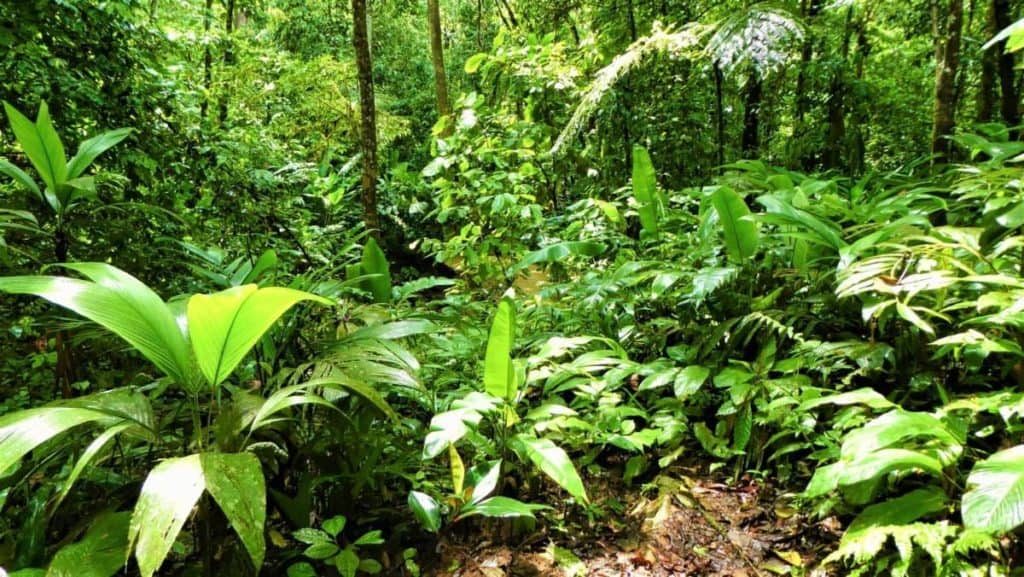
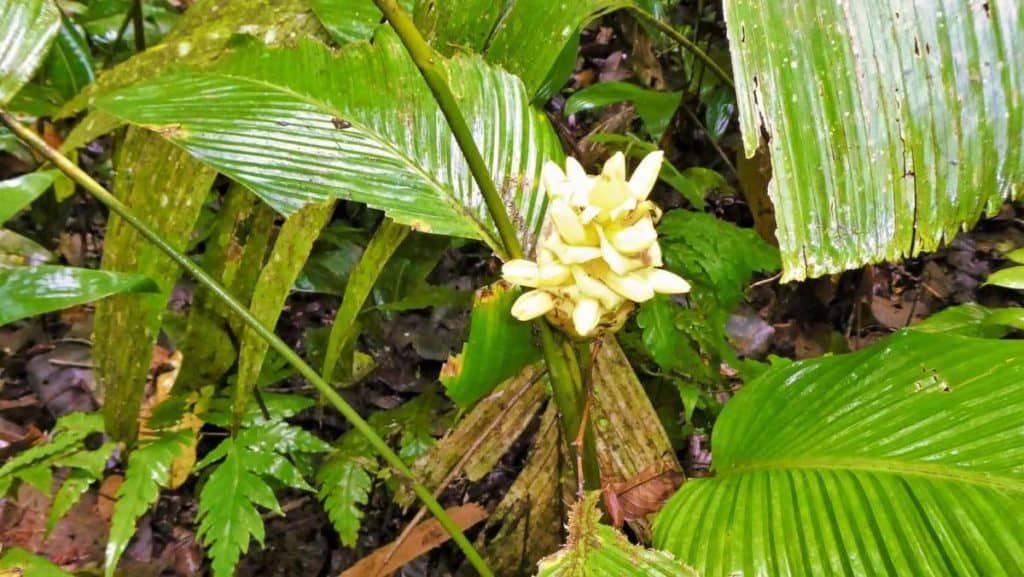
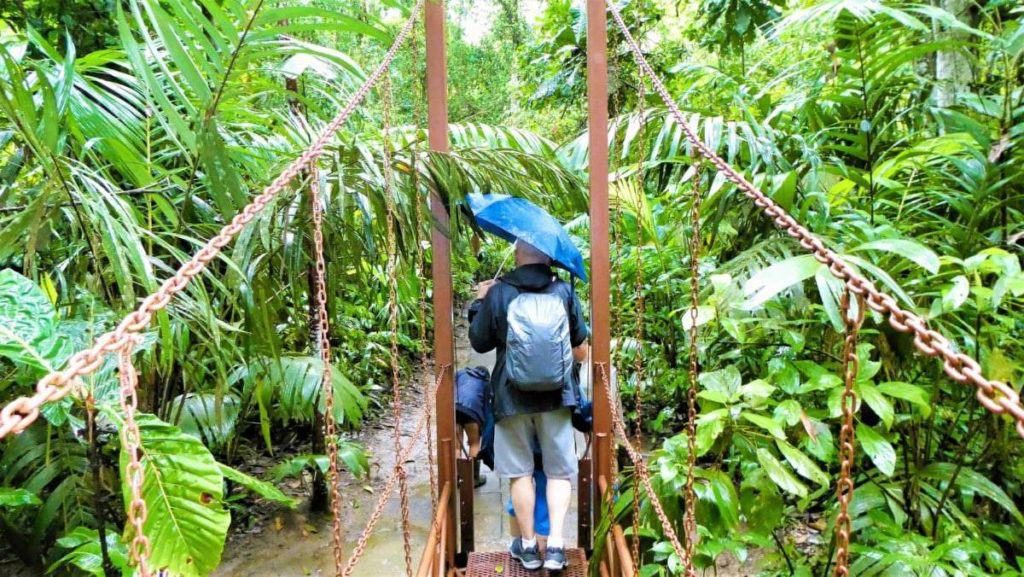
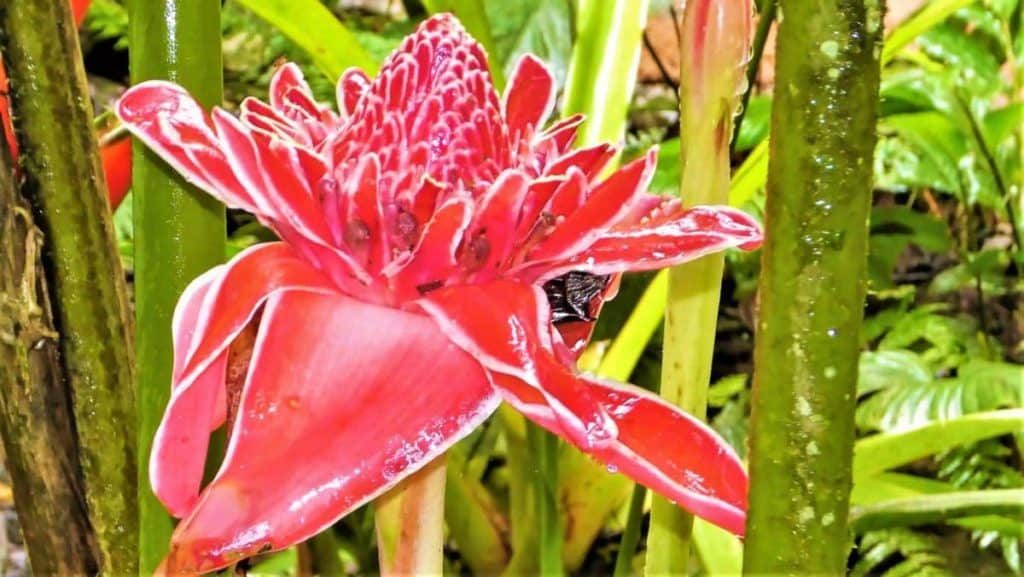
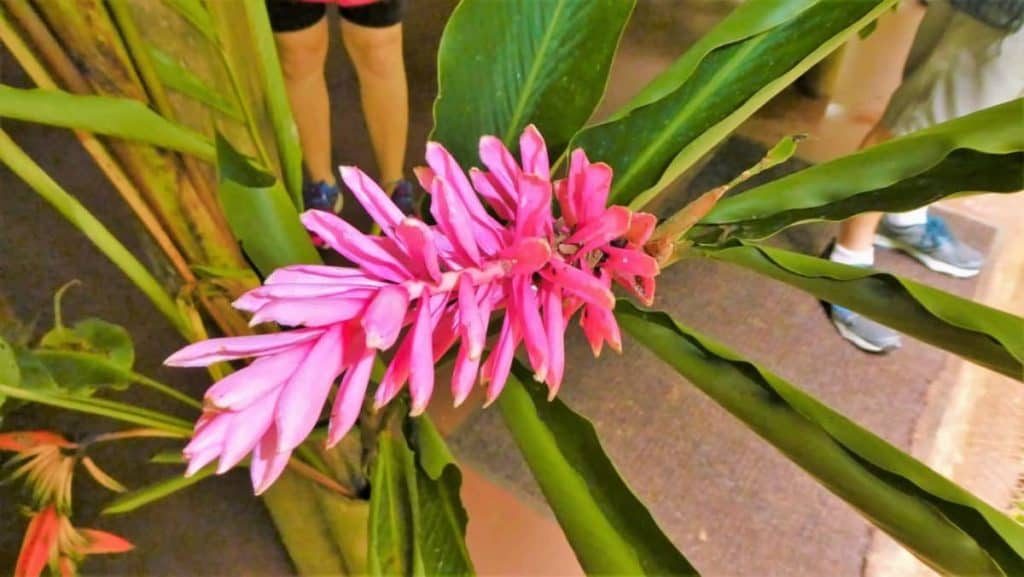
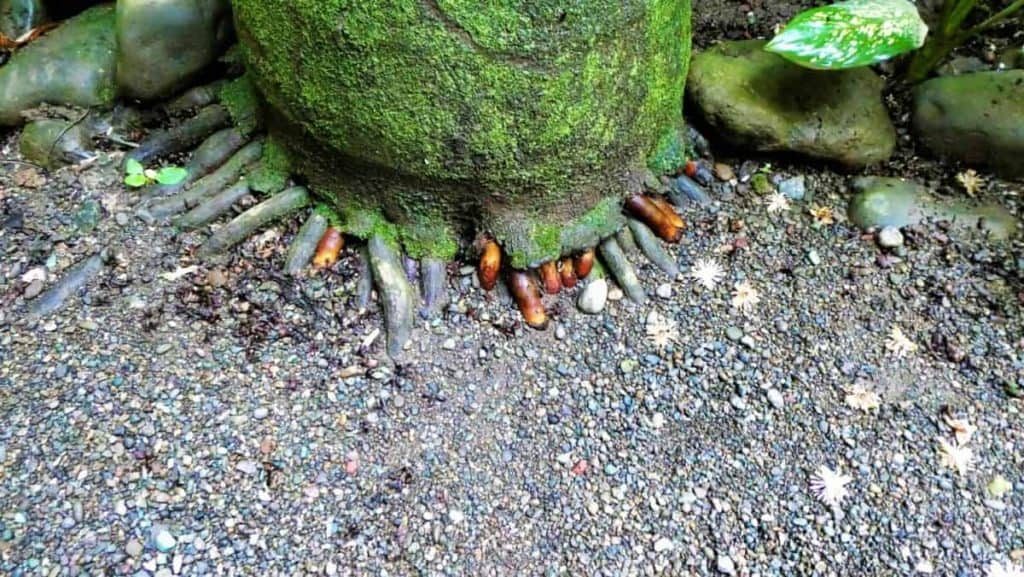
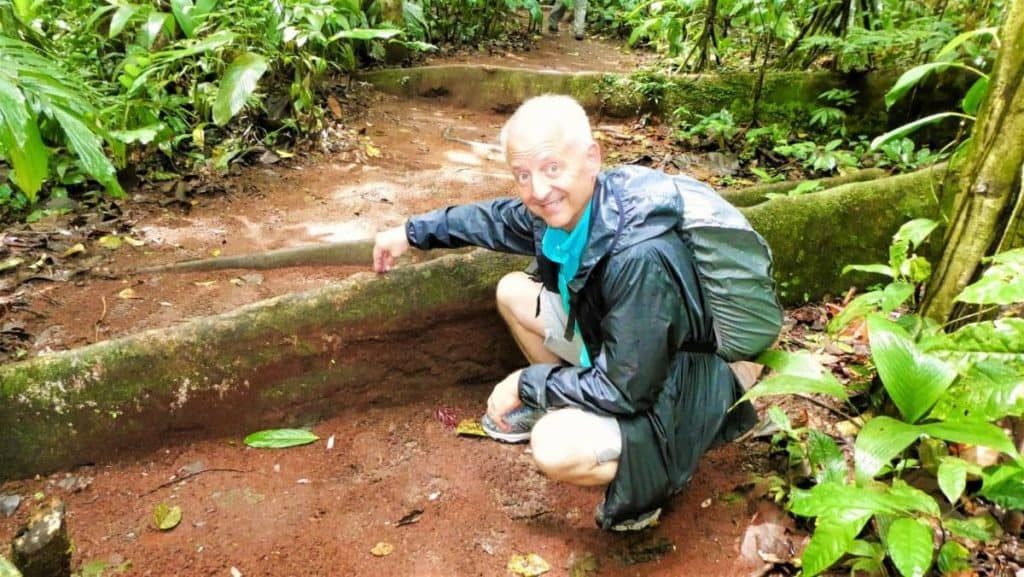
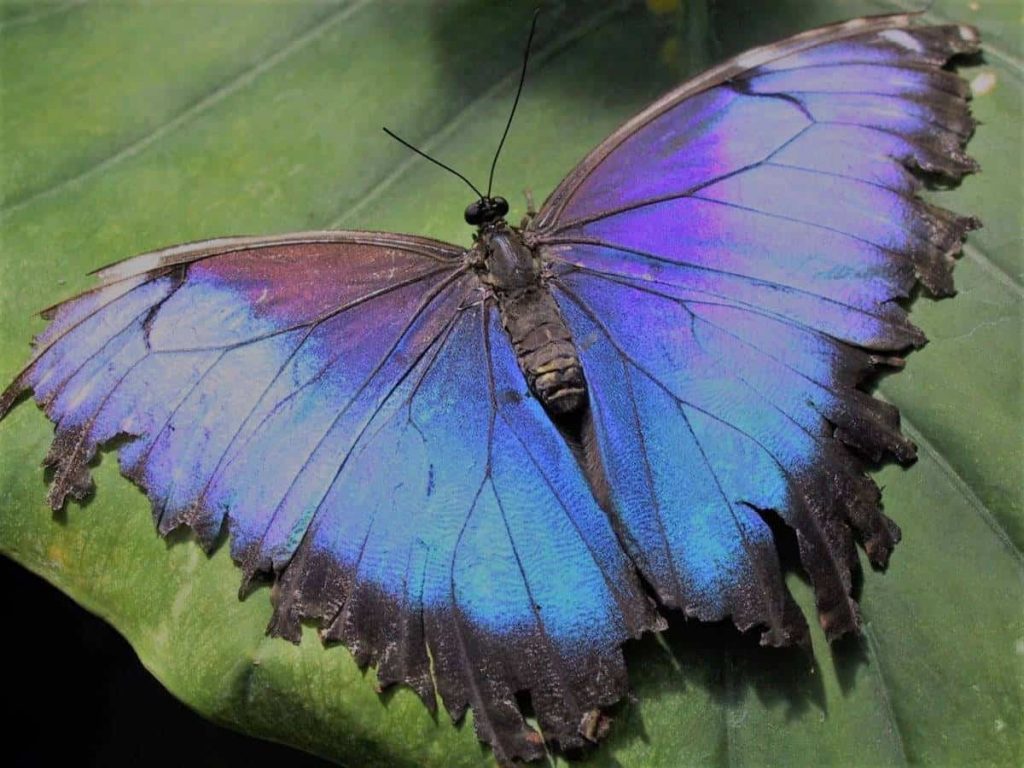
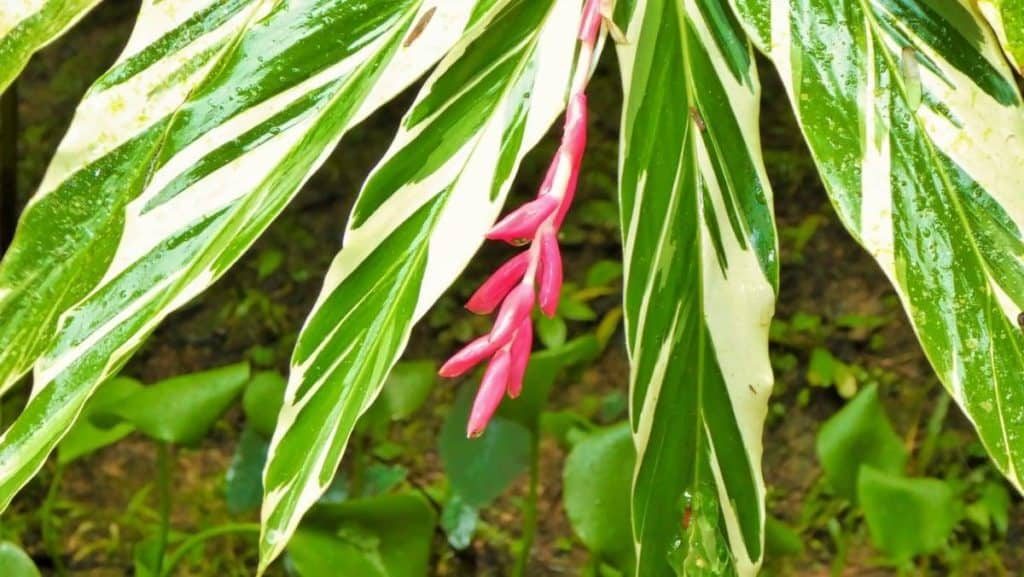
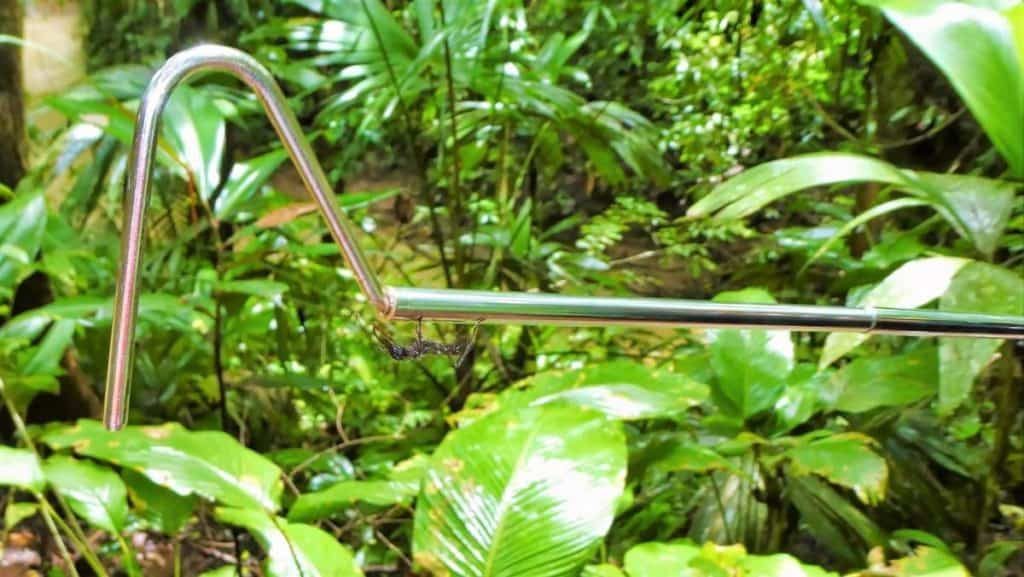
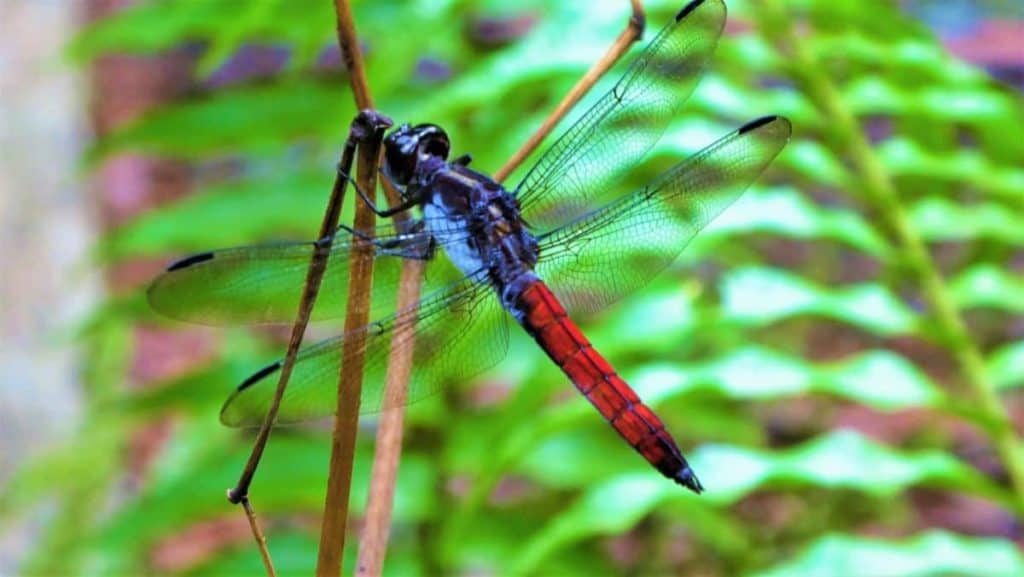
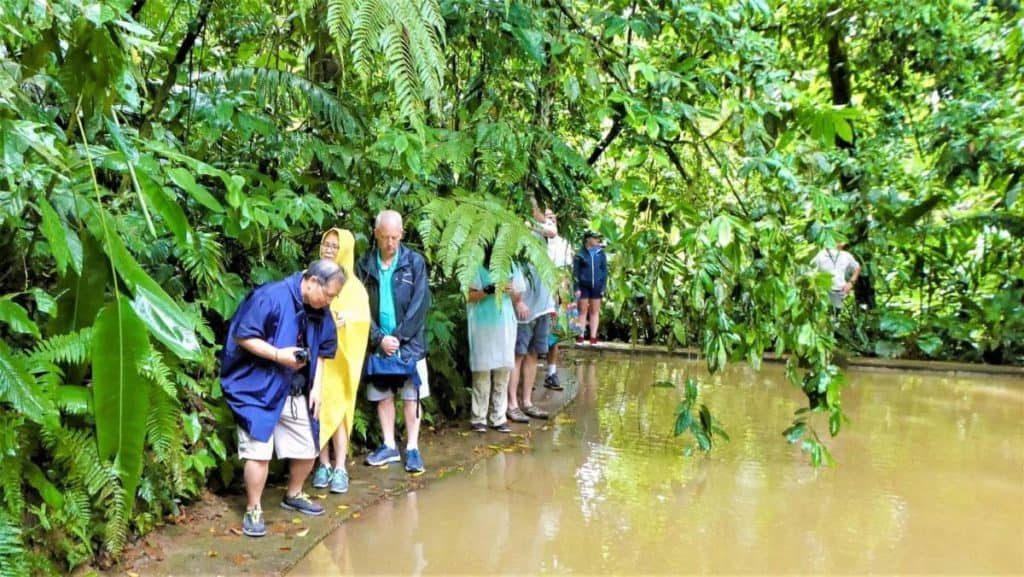
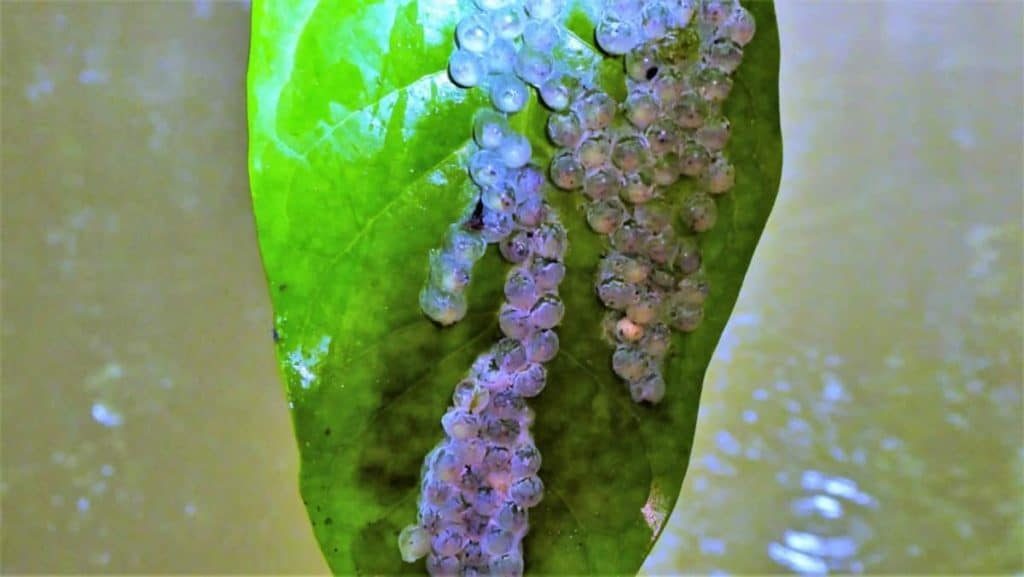
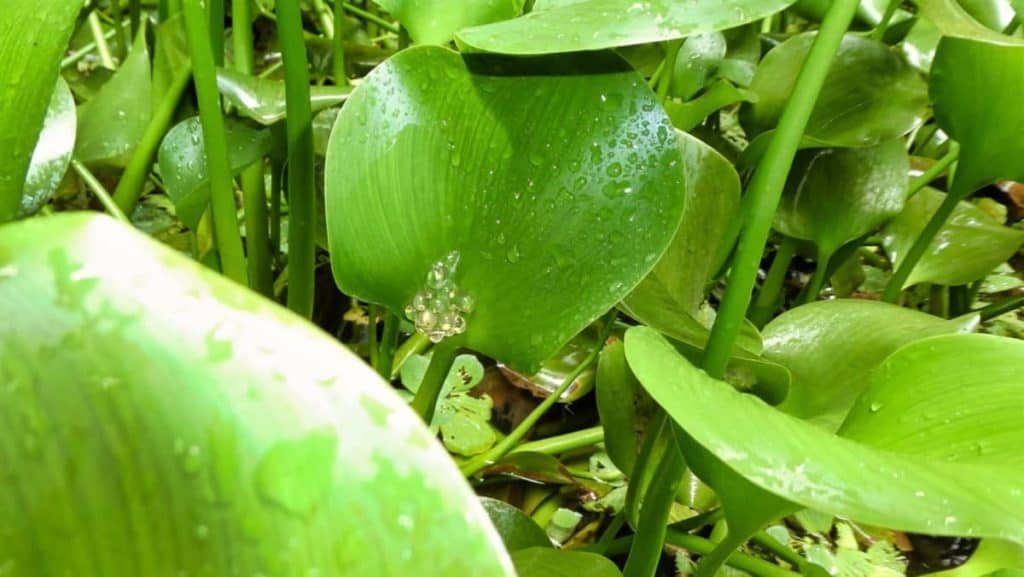
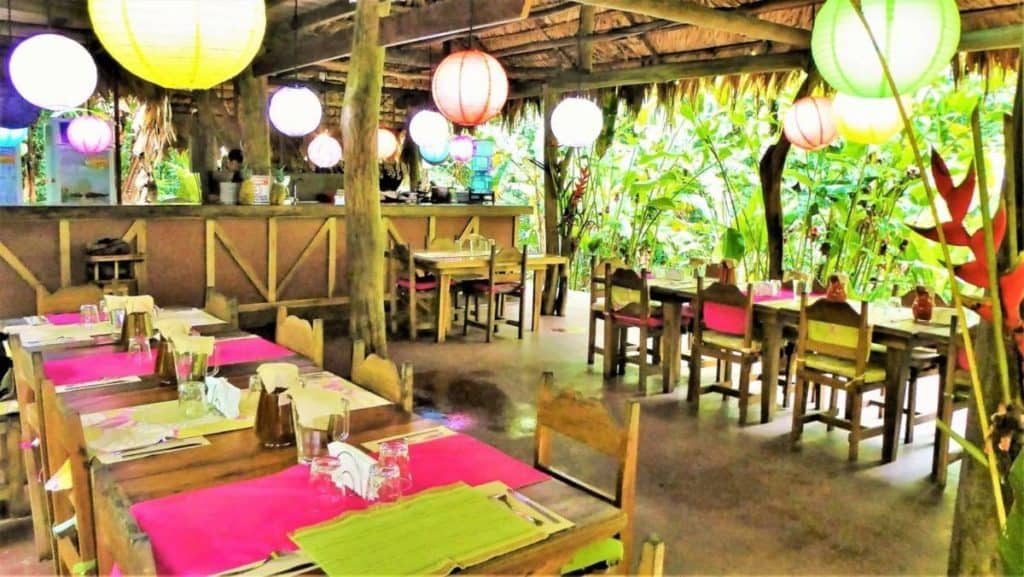

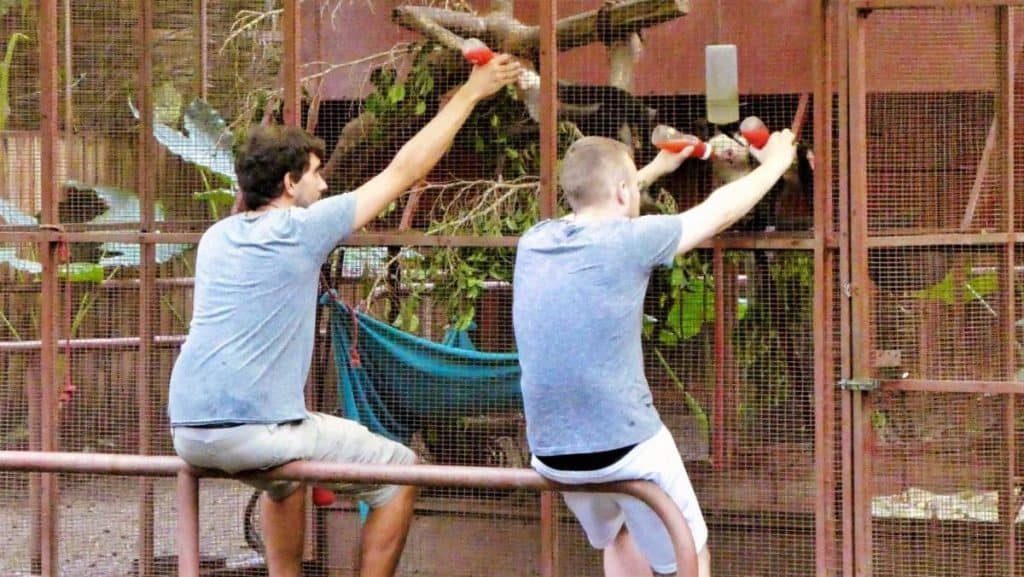
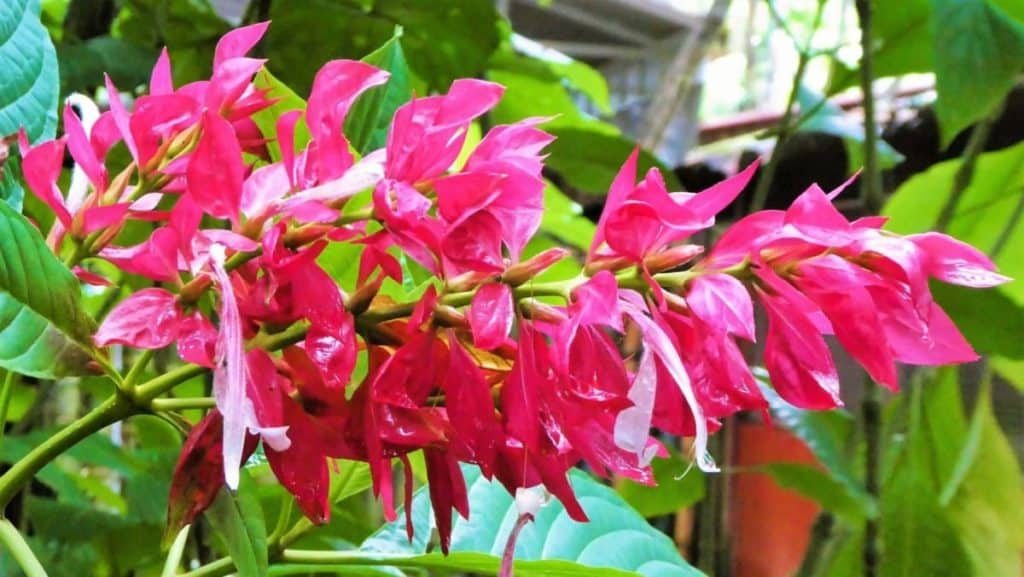
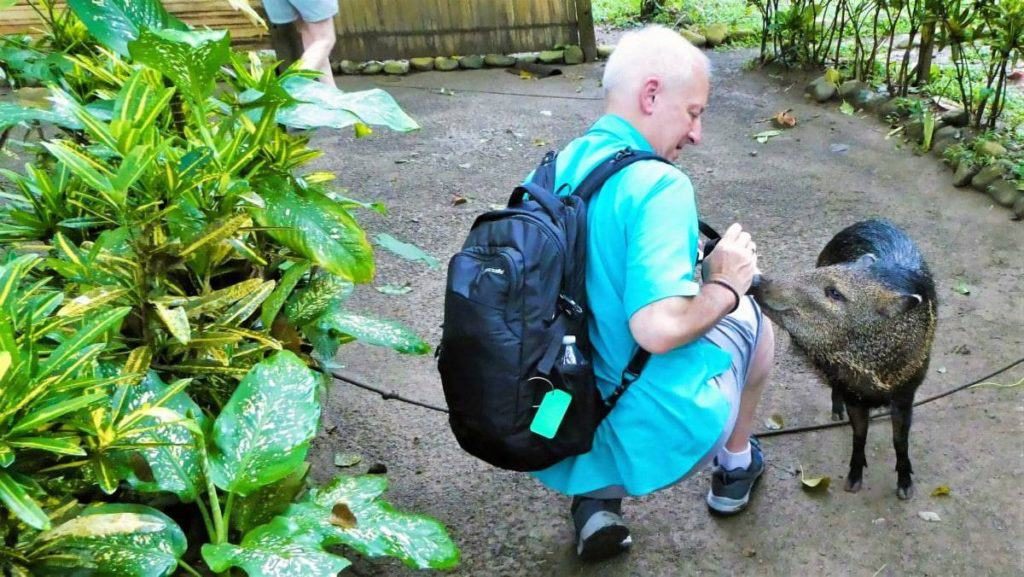
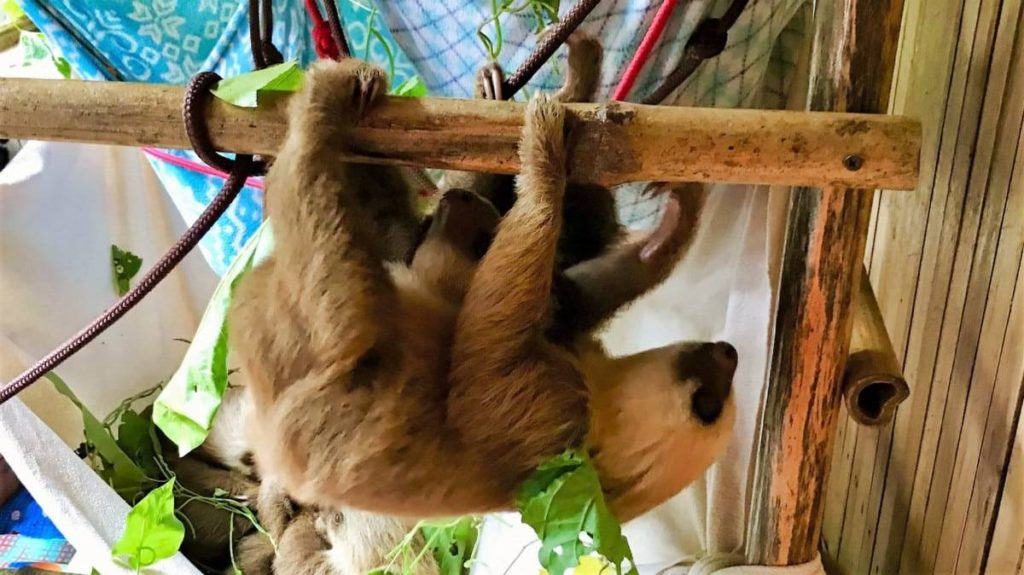
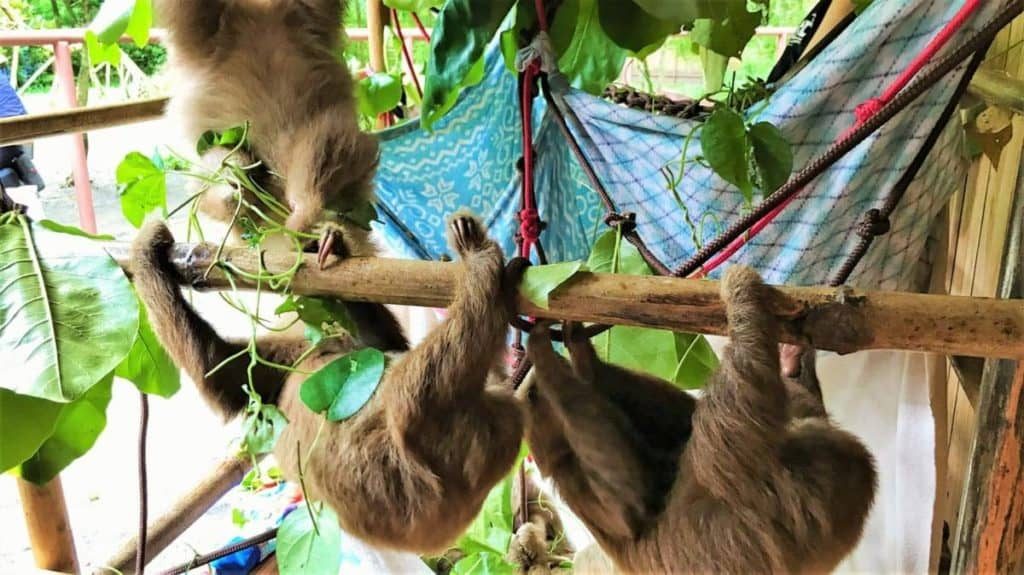
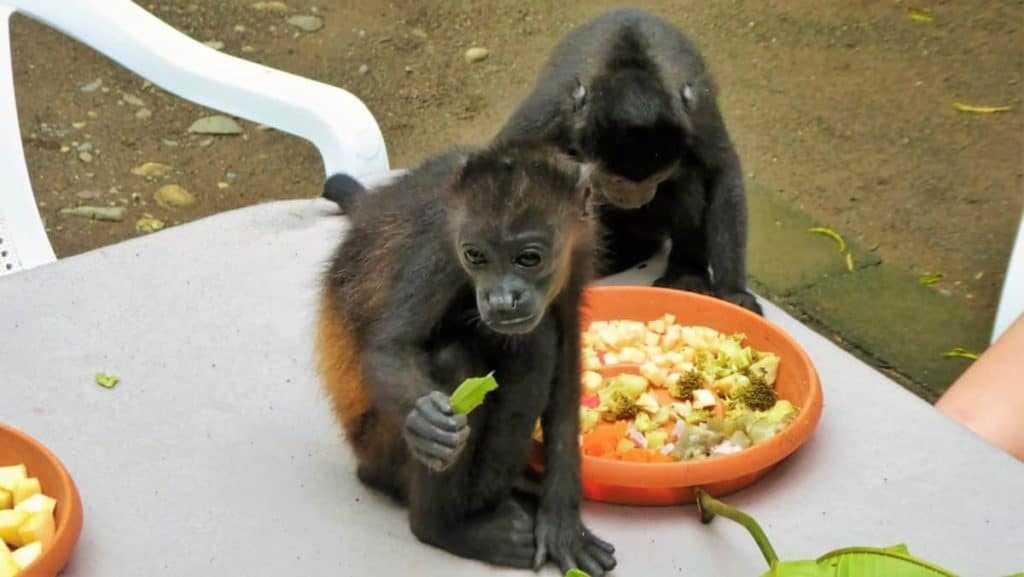
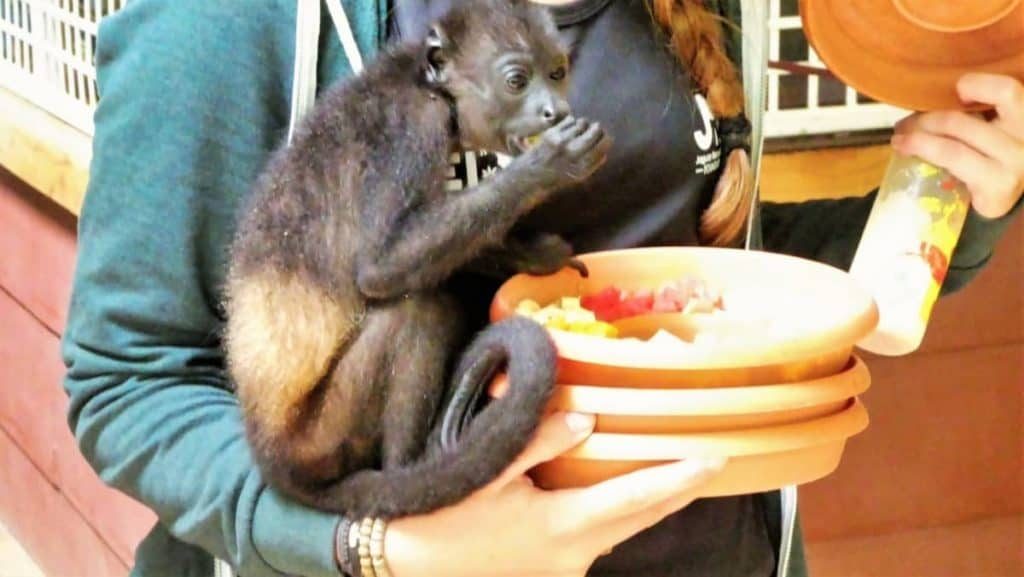
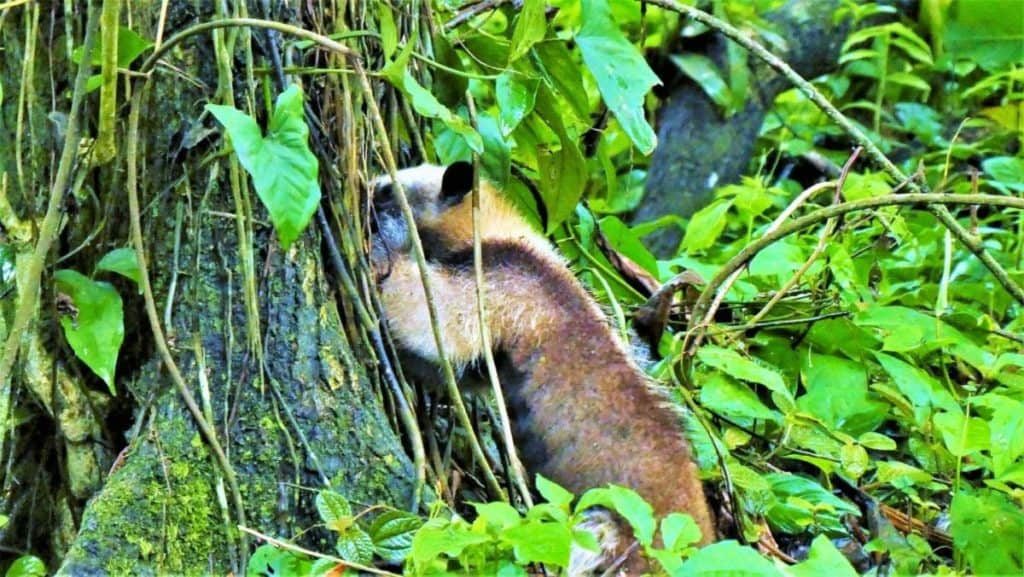
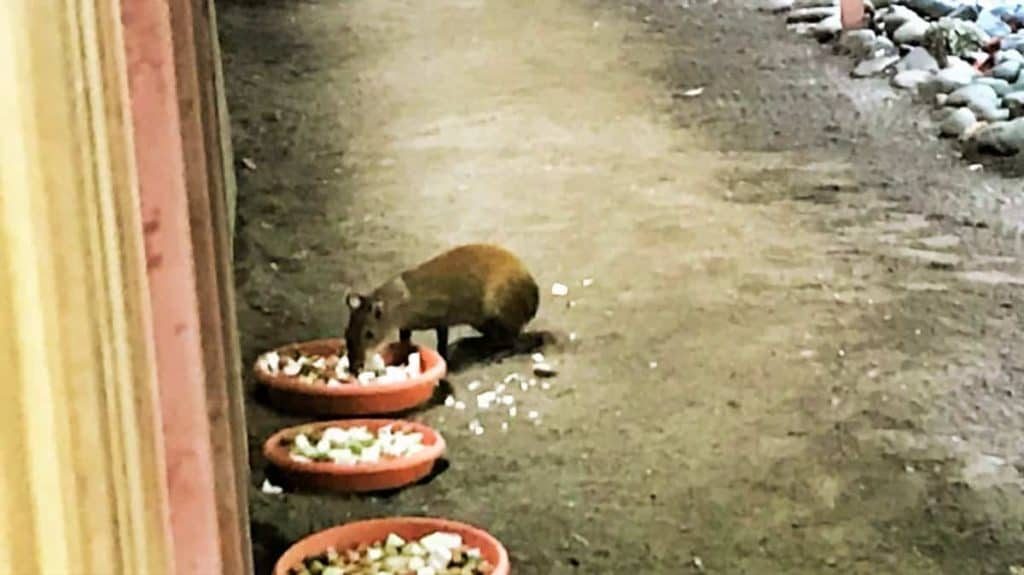
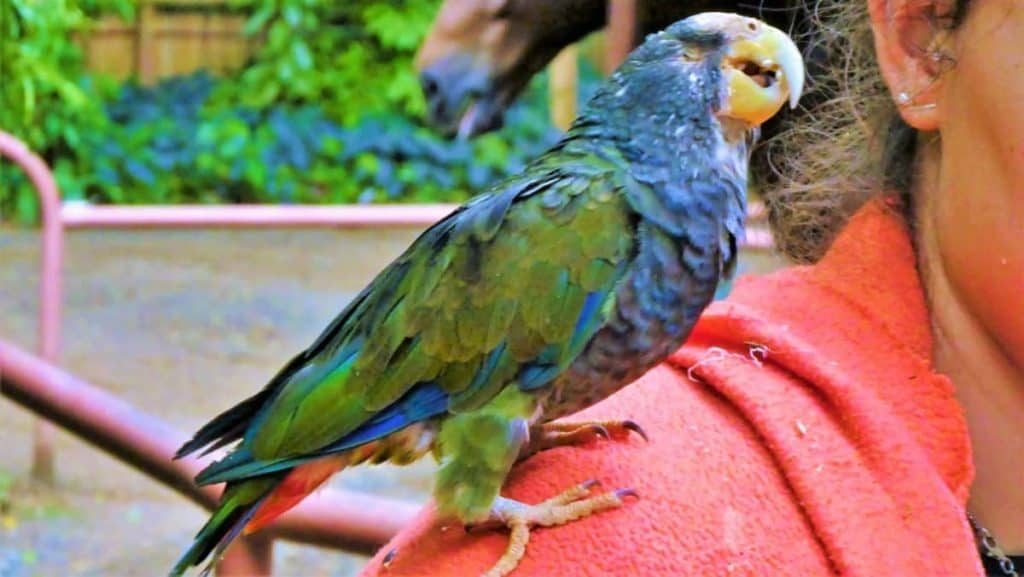
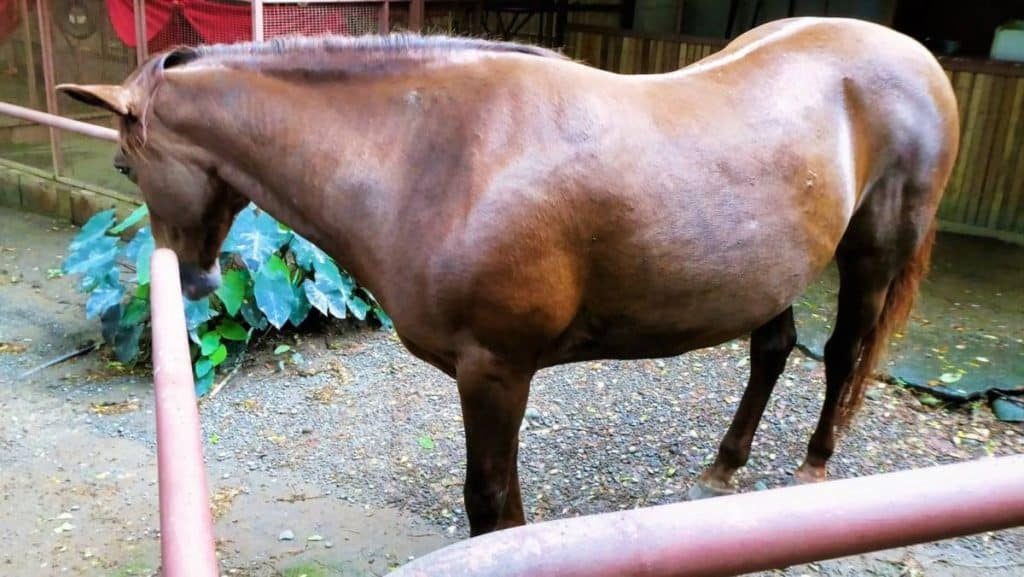
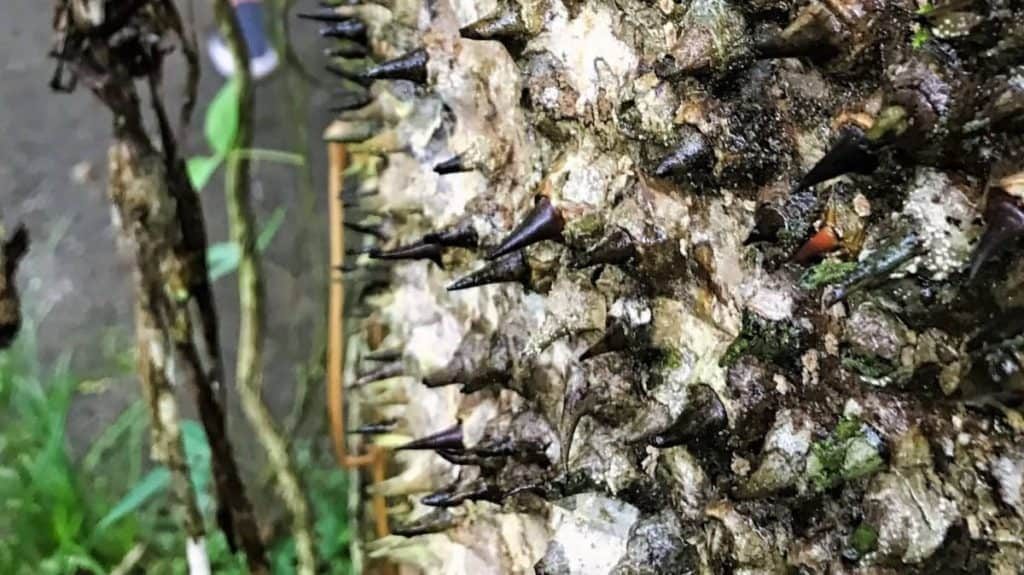
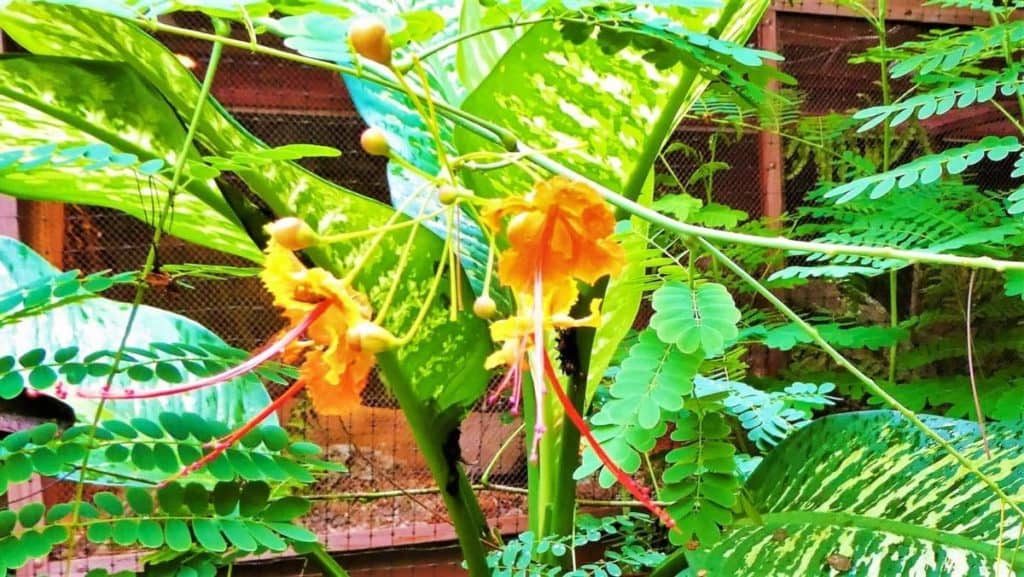
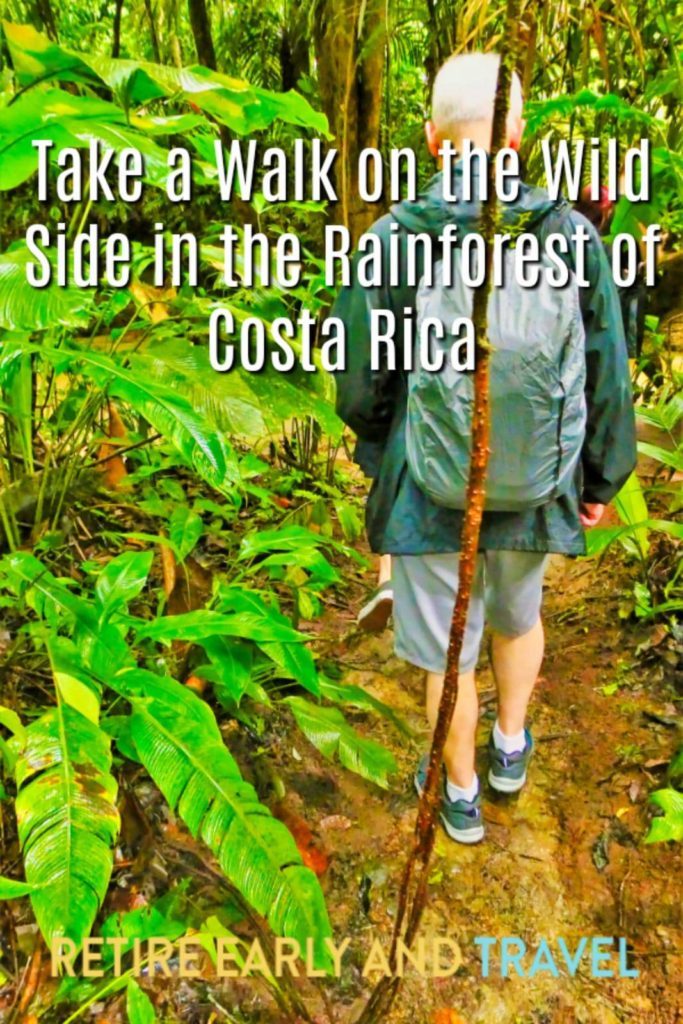
Great travel tips, thanks for posting! I’m also an avid traveller and also switched to a healthier lifestyle. Now training for a race with SportMe running app and I’m curious how am I to inject my running routine into my exotic journeys. Your blog posts are truly inspiring.
Thanks Marutz. Glad to hear you’re a fellow traveler.